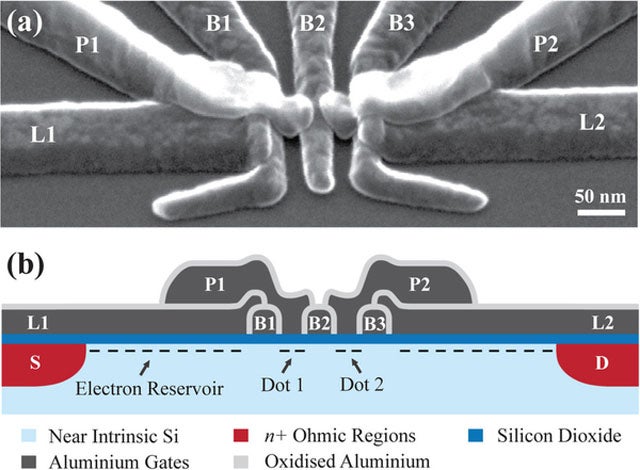Monday, October 17, 2011
A collaboration between IQC researchers and experimentalists in Australia has led to deeper understanding of quantum dots as a means for quantum computation.

Qassemi and Coish partnered with Andrew Dzurak’s experimental group at the University of New South Wales to attain a deeper understanding of how to harness and utilize the properties of electrons.
Quantum information processing requires highly precise preparation, control and measurement of the particles used as quantum bits (qubits) for computation.
An electron magnetic moment in quantum dots — essentially electrons confined in nano-scale structures — has been shown to be a promising system for the building blocks of a quantum information processor.
However, electrons in quantum dots present unique and difficult hurdles, such as unwanted interactions between the magnetic moments of electrons and nuclei of the surrounding environment.
One way to avoid difficulties raised by the nuclear magnetic moments is to use a material (such as silicon) in which only a small fraction of the nuclei have a finite magnetic moment. Even in these materials, the electron magnetic moments can be randomized by other environmental influences, as investigated in this work.
The new results, published recently in Nature’s new online journal Science Reports, demonstrate a more thorough understanding of such interactions in silicon quantum dots.
The paper represents an effective collaboration between theoretical and experimental facets of quantum information research, said Qassemi.
“We derived a simple yet elegant formula that has a remarkable agreement with the experimental results,” he said. “(The result) is a key milestone to unravel the full potential of highly coherent spin qubits.”